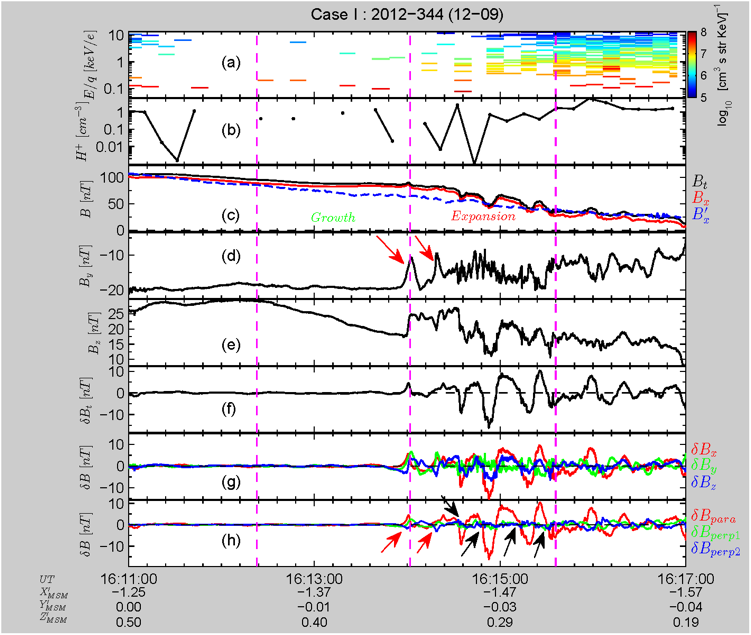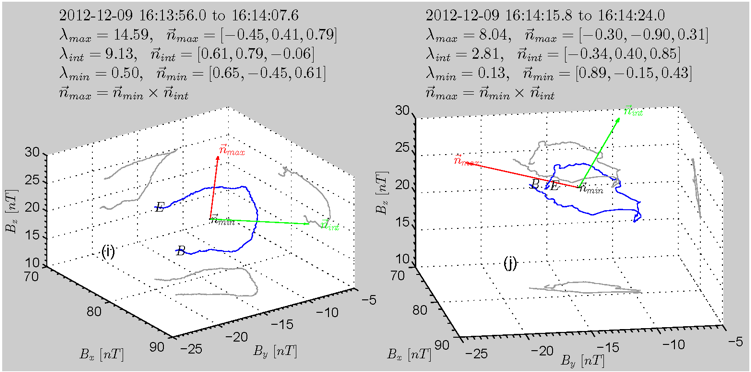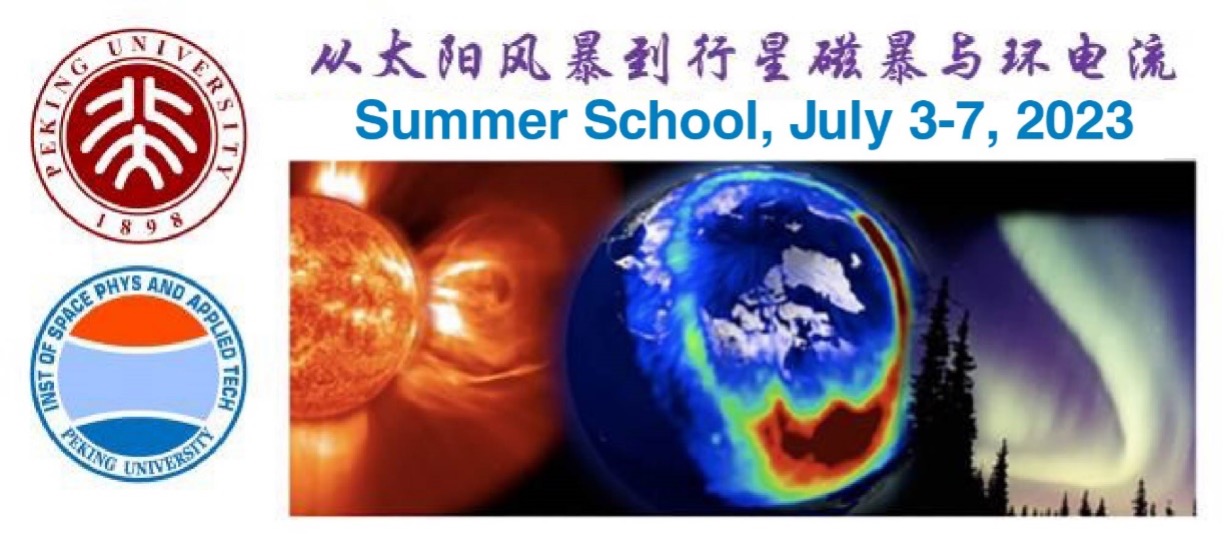水星作为太阳系内行星中除地球外另外一颗具有内禀磁场的行星,距今对其磁层动力学过程的认识还不够充分。在地球磁层的研究中Pi2波动是一种重要的与亚暴电流楔的形成有密切的关系的波动。在之前的工作中,我们使用信使号首次系统的研究了水星磁层在亚暴过程的演化 [Sun et al. , 2015a, doi: 10.1002/2015GL064052],本工作目标为探究水星磁层亚暴膨胀相期间的波动特征。在水星亚暴膨胀相初期,即磁场偶极化期间,信使号在等离子体片边界层附近观测到了具有显著阿尔芬波特征的磁场扰动,随着等离子体片的变厚,卫星在等离子体片中心观测到了一系列的压缩波,由于波动的准周期性以及发生在亚暴膨胀相期间,我们将这些波动称为水星亚暴膨胀相期间的类Pi2波动。结合阿尔芬波和压缩波的周期以及波动的空间分布特征,本研究认为这些波动是由行星向运动的高速流加速形成的,从而提出了水星亚暴膨胀相期间类Pi2波动的形成机制。
该成果发表在 Geophysical Research Letters (GRL)上,文章链接http://onlinelibrary.wiley.com/doi/10.1002/2015GL065452/full
Sun, W.-J., et al. (2015b), MESSENGER observations of Alfvénic and compressional waves during Mercury’s substorms, Geophys. Res. Lett., 42, 6189–6198, doi:10.1002/2015GL065452.
研究工作得到国家自然科学基金委创新群体、面上项目和国家重点基础研究发展规划项目的支持。
MESSENGER observations of Alfvénic and compressional waves during Mercury's substorms
Wei-Jie Sun 1,2 ([email protected]), James A. Slavin 2, Suiyan Fu 1, Jim M. Raines 2, Torbjörn Sundberg 3, Qiu-Gang Zong 1, Xianzhe Jia 2, Quanqi Shi 4, Xiaochen Shen 4, Gangkai Poh 2, Zuyin Pu 1, and Thomas H. Zurbuchen2.
1School of Earth and Space Sciences, Peking University, 100871 Beijing, China.
2Department of Atmospheric, Oceanic and Space Sciences, University of Michigan, Ann Arbor, Michigan, USA.
3School of Physics and Astronomy, Queen Mary University of London, London, UK.
4Shandong Provincial Key Laboratory of Optical Astronomy and Solar-Terrestrial Environment, School of Space Science and Physics, Shandong University, Weihai, China.
Abstract: MErcury Surface, Space ENviroment, GEochemistry, and Ranging (MESSENGER) magnetic field measurements during the substorm expansion phase in Mercury’s magnetotail have been examined for evidence of low frequency plasma waves, e.g. Pi2-like pulsations. It has been revealed that the B yfluctuations accompanying substorm dipolarizations are consistent with pulses of field-aligned currents (FACs) near the high latitude edge of the plasma sheet. Detailed analysis of the B y fluctuations reveals that they are near-circularly polarized electromagnetic waves, most likely Alfvén waves. Soon afterwards the plasma sheet thickened and MESSENGER detected a series of compressional waves. These Alfvénic and compressional waves have similar durations (10 – 20 s), suggesting that they may arise from the same source. Drawing on Pi2 pulsation models developed for Earth, we suggest that the Alfvénic and compressional waves reported here at Mercury may be generated by the quasi-periodic sunward flow bursts in Mercury’s plasma sheet. But because they are observed during the period with rapid magnetic field reconfiguration, we cannot fully exclude the possibility of standing Alfvén wave.
Keywords: Mercury substorm, Alfvén wave, compressional wave, Pi2 pulsation



